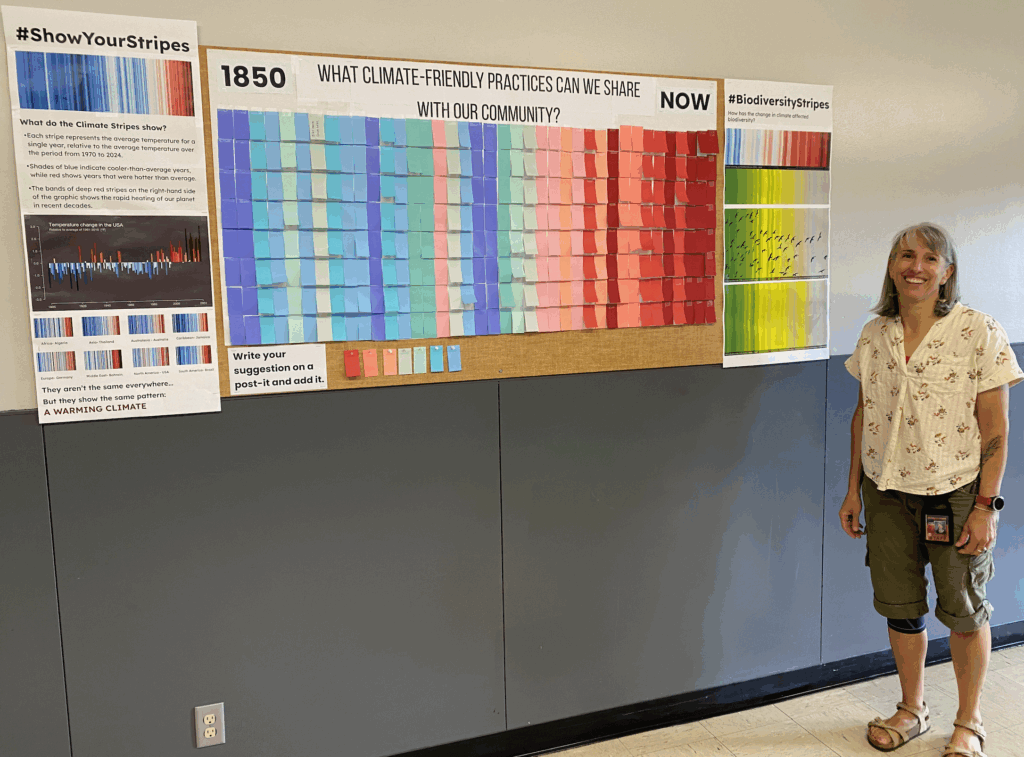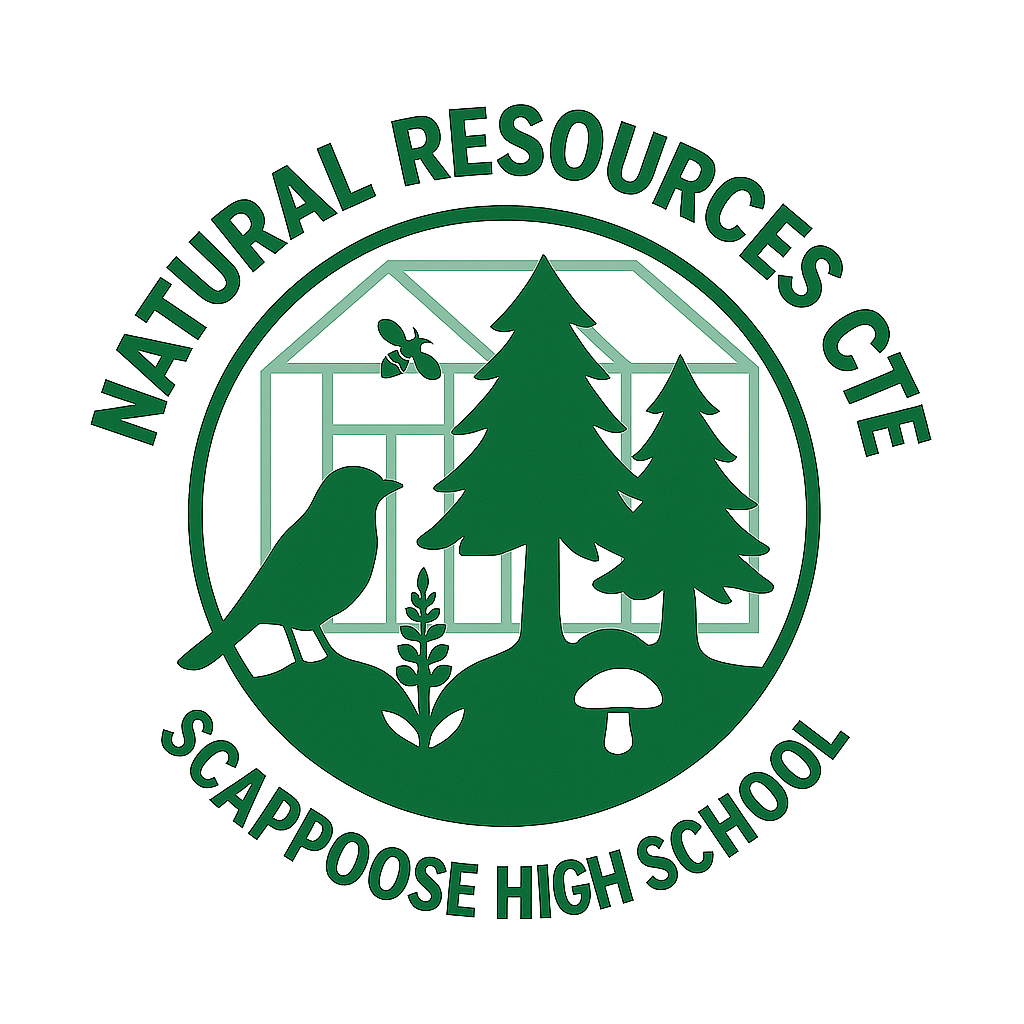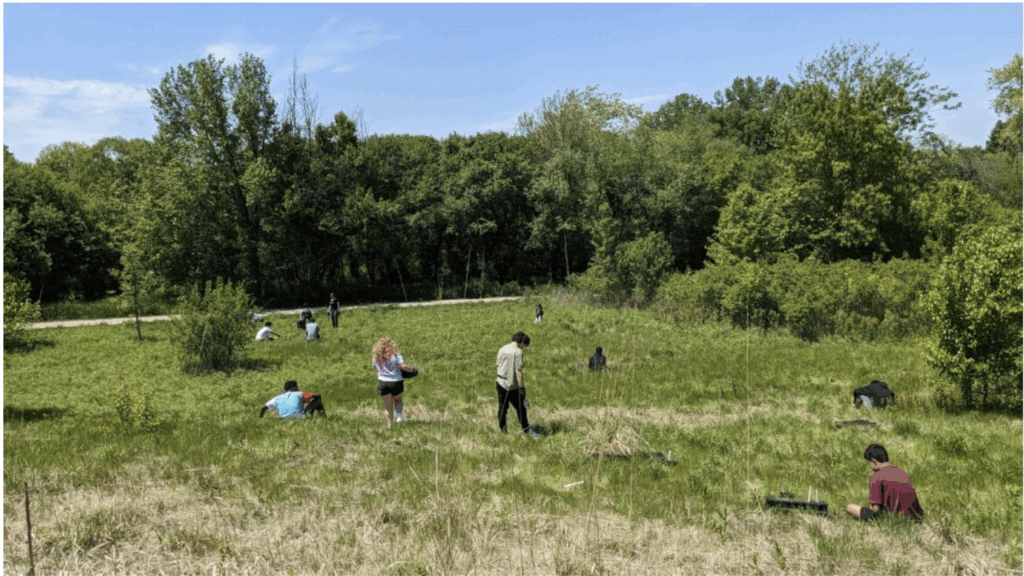Volume 2, Issue 7 | September 2025
Thanks to all of you who have sent in news as the school year begins. There’s so much that we’ll spread it over this and the next newsletter — but please continue to send in news and resources — next deadline is October 10th.
Updates from Climate and Equity Fellows

From Molly German (’24)
We’re one week into the school year so I am feeling a bit better now that I’ve met all my students. I’m teaching Environmental Chemistry and Physics this year. We’ve integrated some of the Earth Science standards in with Chemistry and that’s our first-year science class for high school (Env. Chemistry). I’m finding myself going back over my notes from last summer and finding many good ideas I’d forgotten about.
As far as areas of interest, the thing that is on my mind the most is Indigenous-based land management practices. I just completed an online workshop/class led by Dr. Lyla June Johnston called “Becoming a Regenerative Human.” I’m still processing much of what I learned, but I could potentially write up a summary or share some of what I’m thinking about at one of our call-backs. My biggest takeaway was all the past and present success stories that she shared about land and food management systems that can genuinely provide enough for everyone (which is why this history has been intentionally erased by those who profit from scarcity). My current goal is to incorporate at least one of these case studies in each of our four units in Env. Chemistry: Earth, Air, Water, and Fire.
I have also started a partnership with a local organization called the Center for Land-Based Learning. The goal is to bring 30-35 students on a series of three field trips to participate in a small-scale land restoration project. Our first outing is scheduled for December, so I can take some pictures and share in a future newsletter!
From Camille Fowler (’24)
I have a connection with the San Diego Science Project at UCSD. At the end of last year, I piloted a lesson on heat and homeostasis. It fit with my “shared” lesson so well! I really like the Understanding Global Change modeling tools. In addition, there is an upcoming lecture series this fall at the Birch Aquarium, Scripps Institution of Oceanography.
Unfortunately, our school HVAC needs repair and our garden was bulldozed. On a positive note, I attended the Environmental Educator Leaders Network (EELN) Retreat last Saturday and I have already connected with our district’s facilities to make plans for a new space! I am looking forward to more events and participation. I am planting seeds of sustainability and health at our school; we have a new administration… I am on a planning subcommittee for the California Association of Science Educators (CASE) and I will be attending the conference this October.
Sometimes I struggle with my efforts to contribute, but my support networks help. To balance work, I go to dance classes as much as possible.
From Amanda Darlak (’24)

The start of the school year is always a whirlwind. I am proud of my interactive Climate bulletin board, which I just finished
I had ACL surgery this summer, so I was forced to slow down my normal summer speed. I worked on modifying my Biology class to have a more Environmental perspective. I am teaching Environmental Biology, Plant Science, and a Dual Credit Environmental Science class, all part of my Natural Resources CTE program (see new logo attached).
I attended a Forest Resiliency in a Changing Climate workshop last week, where we toured burn sites from the 2020 Labor Day fires that burned 85,000 acres. We compared the regeneration of privately and commercially managed forests after the fire. The recovery in just five years is remarkable—especially in areas that were replanted quickly.

What surprised me most was the innovation in the wood technology industry. One mill, Freres Lumber in Oregon, is the only one of its kind in the world, producing mass plywood panels (MPP). Unlike traditional plywood, MPP is made with veneer that can be sourced from salvaged wood after fires—something most other mills will not accept. If you pass through the Portland Airport (PDX), the roof there is constructed with this material. The Peavy Forest Science Center at Oregon State University, which we also toured, was also built using this technology, as OSU researchers were integral in testing its load capacity. Since MPP is isotropic, it can be used in mid-to-high-rise construction, replacing steel and concrete in buildings up to 18 stories tall. This is exciting in terms of being a more sustainable practice: we can use a renewable material, use salvaged wood from forest fires, sequester carbon into the building itself, and reduce reliance on steel and concrete—meaning significantly less CO₂ released into the atmosphere. Pretty cool — created from a hot situation.
From Carolyn Porter (’24)
I was a fellow for the Rocky Mountain Science Research Experience for Educators (RMSREE) this summer. I was assigned to a Primary Investigator/Professor at the University of Colorado Denver and worked with them on a project through the summer. Throughout the summer experience, the cohort was able to tour other labs, participate in some lab experiences, and listen to presenters from the other labs. I presented research in progress in July and wrapped up with an end of summer talk that outlined how I will integrate my experience into my classroom.
My summer experience was collecting microclimate data for Dr. Ben Crawford who is in his second year of research for a 5-year NSF funded project about how green investments can affect mass transit users and how green investment can be used in planning transit-oriented communities. I used a handheld weather station called a Kestrel. I am currently in the process of writing a grant to purchase 8 Kestrels and tripods for my school.
Here are links to my presentations if you’re interested in more.
Research in Progress:
https://docs.google.com/presentation/d/19-Wy4rUKQclKOQm0JqlMChepTUsCxM-9eieONjb_elo/edit?usp=sharing
End of Program Talk:
https://docs.google.com/presentation/d/1WIVIaydSjgvboy_LanF1Q2hcG02WoVW-NFVbZnX2Plo/edit?usp=sharing
From Bess Hjartarson (’24)
I have some fantastic groups of kids this year. I’m teaching Integrated Science 2 to all the sophomores, and then Biology, AP Biology, and Wildlife Management 1 & 2. My Wildlife 2 students will be helping me share our STEM Trunk experience (they were the ones who did the demos at the elementary schools last year) at our state educator conference in Missoula in October. Just like our workshop last spring at the MT Environmental Educators conference, we will be presenting with my colleague Dusty Rixford who is the education coordinator at American Prairie, and an amazing supporter of the activities that we do. But this time we are bringing the students! I am so excited.
One of my goals for this year is to integrate more local climate-related data into my daily lesson plans for all of my classes. It has been really easy to do that in my upper level elective classes, with my juniors and seniors, where I have some flexibility with curriculum, but I am trying to do this with my underclassmen in the required core classes too…more place-based involving the students in the data collection. I have been gifted with several different types of air quality monitors from both MSU Bozeman and UM Missoula (and DEQ) and this week we spent some time in our (new!) Native Plant Garden doing some small “prescribed” burns with matchstick forests and then measuring air quality to see the difference a (model) wildfire makes. If there is anyone else in our cohort working on anything similar, I would love to hear about it! Otherwise, it will just be great to see/hear from everyone and listen to all of the awesome things everyone has been doing despite all of the scary things that we hear about in the news every day.
Resources and Opportunities

New Article by Carl Armstrong (’22): I Will Teach You How to Pet the Bumblebees

In the Fall 2025 Issue of Kaleidoscope Journal Carl Armstrong tells the history of students restoring prairie land at his suburban Chicago high school and reflects on their accomplishments.
From TERC’s STEM for all Multiplex

From TERC’s STEM for all Multiplex: “Indigenous ways of learning.” This is an archived webinar, brief videos, and other resources resources highlighting Indigenous ways of learning — learning by collaboration, making a difference/giving back, intergenerational connection, responsibility, and respect. Three project teams that studied learning and how to foster it in Indigenous communities discussed what can be learned from Indigenous ways of learning, for Indigenous peoples and the world at large.
Opportunity to Participate in the HeatViz Study with TERC
Myriad Sensors, Inc. (DBA PocketLab) and TERC are seeking Environmental Science teachers across the country to pilot HeatViz, a new PocketLab curriculum and sensor in their classrooms, funded by the National Institutes of Health (NIH). HeatViz is a portable, highly sensitive temperature and location sensor that students can use to collect micro-temperature data in their communities, along with curriculum materials that support high school students in using these sensors to study urban heat islands and the health impacts of excessive heat associated with them.
Teachers who participate will be part of a randomized control trial (RCT) study. All teachers will have their classes randomly assigned to either the HeatViz treatment group (use the HeatViz sensors and materials) or to a “business as usual (BAU)” control group (teach related content in the usual way). Classes assigned to the treatment group will use the HeatViz curriculum, an approximately 2-week long, NGSS-aligned unit about heat islands. Classes assigned to the BAU group will use the regular curriculum on the same standards. At the end of the unit, students will take an assessment designed to help us understand whether the HeatViz curriculum helps students develop their interest in and understanding of science. This study is IRB-approved.
To be eligible to participate, you should:
- Teach high school Environmental Science, Earth Science, Biology, or Health
- Have the flexibility to include a 2-week long unit in Fall 2025
- Be willing to help researchers get permission from your schools/districts and parents to conduct the study in your classroom
- Be willing to be randomly assigned to either the BAU or treatment group
- Be available for some virtual trainings/interviews/debrief calls and potentially an in-person observation
At the end of the study, all participating teachers will receive the HeatViz curriculum and a classroom set of Pocketlab sensors, as well as a stipend of up to $400.
Full details about the study can be found on the Teacher Informational Letter.
If you are interested in learning more, please fill out this screening survey and a researcher will be in touch. There will also be an informational Zoom to answer your questions about participating.
If you have further questions about the HeatViz materials or this research study, please contact Clifton Roozeboom (clifton@pocketlab.com) at PocketLab or Jim Hammerman (heatviz@terc.edu) at TERC.
New Report from the National Academies
The National Academies of Science, Engineering, and Medicine has come out with a major report on the Effects of human-caused greenhouse gas emissions on U.S. climate, health, and welfare. From their description:
The impetus for this report was a notice of proposed rulemaking issued in August 2025 by the U.S. Environmental Protection Agency (EPA) indicating its intention to rescind the 2009 Finding of Endangerment..[The report shows that] that EPA’s 2009 finding that human-caused emissions of greenhouse gases adversely affect human health and welfare was accurate, has stood the test of time, and is now reinforced by even stronger evidence…. Moreover, research has uncovered additional risks that were not apparent in 2009.
You can read it online or download a free pdf here.
Article in the SF Gate
Check out this article about Molokai, HI residents uniting to buy back a third of the island, owned by a billionaire.
Now’s your chance! Deadline for next newsletter
Send us your ideas, your news items, or resource reviews by October 10th for next month’s newsletter.
Call-backs: Feel free to suggest topics for future call back sessions
Contact Brian at climateandequity@terc.edu with ideas and proposals!
The Climate and Equity project is funded by the John D. and Catherine T. MacArthur Foundation.
